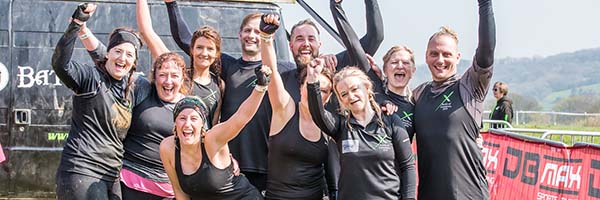Training for obstacle course racing (OCR) is tough enough, but when you add the challenge of competing in a hot climate, the demands on your body increase significantly. To ensure you perform at your best, it’s crucial to adopt smart training practices, maintain proper nutrition and hydration and choose the right gear. Here are some essential tips to help you thrive when training in the heat because, who knows, our next OCR may be a scorcher!
How To Train In The Heat
1. Acclimatise Gradually
Start by gradually exposing your body to the heat. Begin with shorter training sessions during the cooler parts of the day, then slowly increase the duration and intensity as your body adapts. This process, known as heat acclimatisation, can take about 7-14 days, depending on individual tolerance. If we have a heat wave long enough in the UK, make use of it!
2. Adjust Intensity and Duration
When the temperature soars, it’s wise to adjust the intensity and duration of your workouts. High temperatures will elevate your heart rate and make your body work harder to cool itself. So take this into account and rein things back a notch and focus on listening to your body.
3. Incorporate Heat-Specific Workouts
Incorporate workouts that mimic the conditions you’ll face during your OCR events. Train on sandy terrain, run uphill and practice crawling under low obstacles. These activities not only prepare you for race day but also help your body adapt to performing in hot conditions.
4. Use Cooling Techniques
Make sure you cool off fully after your sessions. Whether that’s a cold shower or sitting in the shade with a cold drink, get your body back to homeostasis before cracking on with your day. You can read more about injury prevention here.
How To Eat And Drink In The Heat
1. Stay Hydrated
Hydration is paramount when training in the heat. Start hydrating well before your workout by drinking throughout the day. During exercise, aim to drink every 15-20 minutes using a sports drink that contain electrolytes to replenish those lost through sweat.
2. Monitor Your Hydration Levels
Monitor your hydration levels by checking the color of your urine. Light yellow indicates proper hydration, while dark yellow or amber suggests dehydration.
3. Optimise Your Diet
Fuel your body with a balanced diet rich in fruits, vegetables, lean proteins and whole grains. Foods high in water content, such as watermelon, cucumber and oranges can help keep you hydrated. Avoid heavy, greasy meals before training as they can make you feel sluggish – they make you feel rubbish at the best of times, even moreso when it’s super-hot! Our last blog post talked all about what to eat before an OCR.
How To Dress For A Hot OCR
1. Wear Lightweight, Breathable Clothing
Opt for lightweight, moisture-wicking fabrics that allow your skin to breathe and sweat to evaporate. Avoid cotton, which retains moisture and can lead to chafing.
2. Protect Yourself from the Sun
Wear a hat or visor to shield your face from the sun. Sunglasses with UV protection can help protect your eyes. Apply a sweat-resistant sunscreen with at least SPF 30 to all exposed skin, and reapply as needed.
3. Select the Right Footwear
Choose shoes designed for OCR with good drainage and grip. Wet and muddy conditions are common in OCR events, so your shoes should provide traction and prevent slipping. Wear moisture-wicking socks to keep your feet dry and reduce the risk of blisters. For more on this, check out our Gear Guide for OCR guide.
4. Carry Hydration
Invest in a hydration pack or belt that allows you to carry water easily during your workouts. This ensures you can stay hydrated without having to stop frequently. Look for options with additional storage for gels or snacks.
How To Train For A Hot OCR – Conclusion
Training in the heat requires careful planning and consideration. By gradually acclimatising, adjusting your workout intensity, staying hydrated, eating properly and wearing the right gear, you can effectively prepare for your OCR events even in hot climates. Remember to listen to your body and prioritise your safety at all times.
Back to Blog



